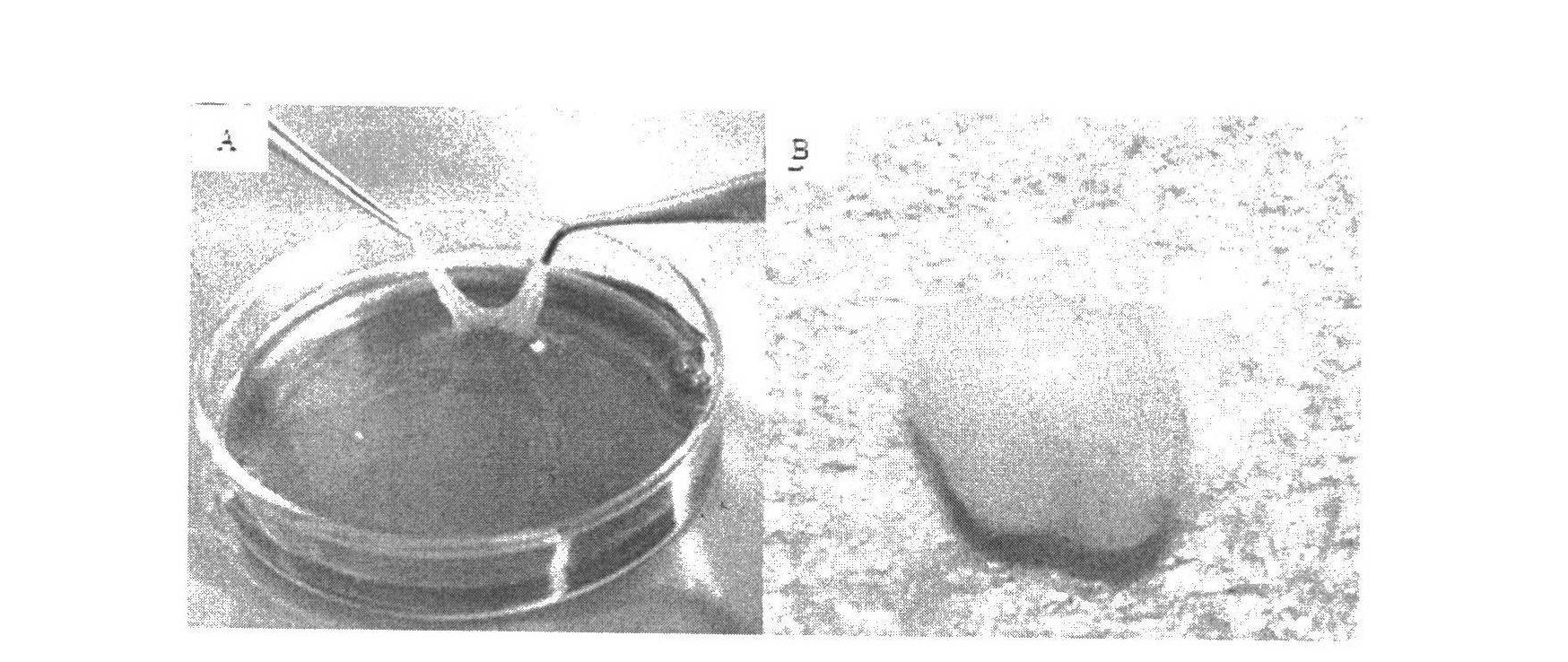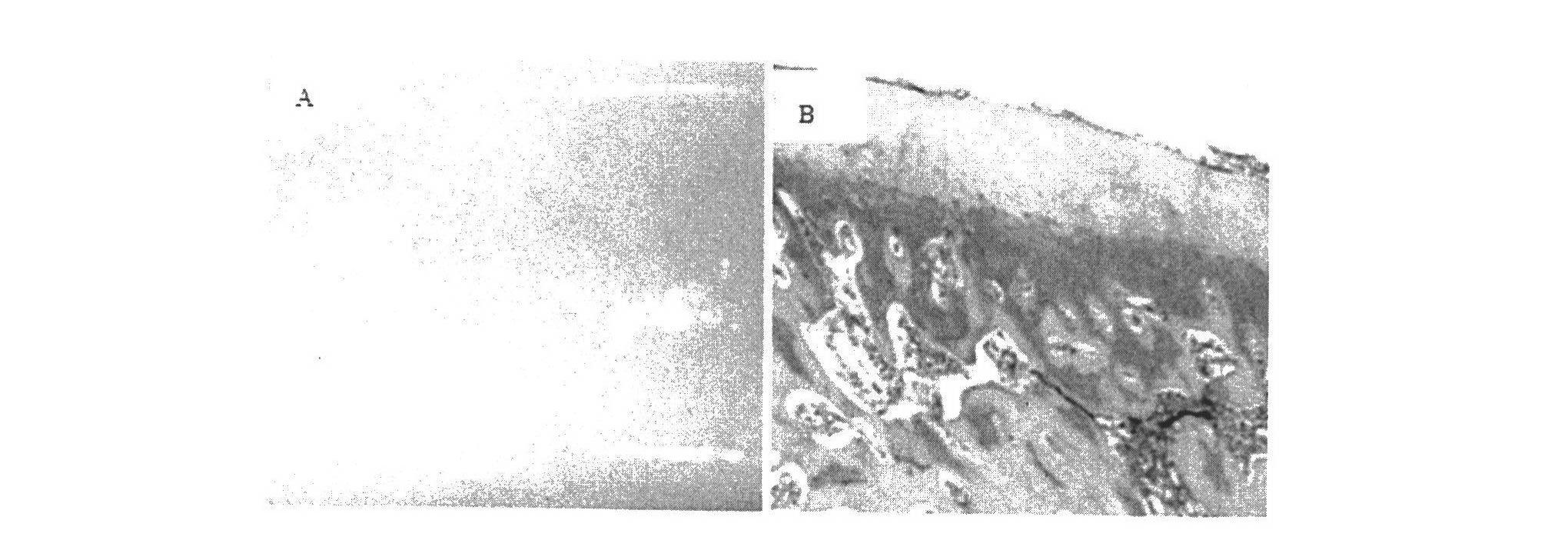Tissue engineering cartilage and preparation method thereof
A technology of tissue engineering and cartilage, applied in bone implants, medical science, prostheses, etc., can solve the problems of limited donor sources, failure to meet normal cartilage mechanical requirements, increase patient damage, etc., and achieve good cell activity and micro-organisms. Effects of environment, improvement of cartilage survival rate, and improvement of fusion ability
- Summary
- Abstract
- Description
- Claims
- Application Information
AI Technical Summary
Problems solved by technology
Method used
Image
Examples
example 1
[0033] Example 1, preparation of human tissue engineered cartilage
[0034] Step 1. Preparation of cartilage calcification layer: Human bone marrow mesenchymal stem cells were amplified with commercial low-sugar DMEM medium, and the third generation BMSCs were taken at 1×10 5 / cm 2 Inoculated in a 6-well culture plate for cell culture, after the cells were completely adhered to the wall, the culture solution A was replaced to induce culture; Bovine serum 100ml / L, dexamethasone 10 -8 mol / L, β-sodium glycerophosphate 10mmol / L and ascorbic acid 50μg / mL.
[0035] Detection of induced differentiation into osteoblasts: Alkaline phosphatase calcium cobalt staining, calcium alizarin red staining and type I collagen immunohistochemistry were performed on the 7th and 14th days of culture to detect the induction of BMSCs into osteoblasts, and the results Positive; the preparation of cartilage calcification layer was completed after 15 days of culture.
[0036] The acquisition and cul...
example 2
[0044] Example 2, preparation of rabbit tissue engineered cartilage
[0045] Step 1. Preparation of cartilage calcification layer: take the third generation rabbit BMSCs according to the ratio of 1.5×10 5 / cm 2 Inoculate in a 12-well culture plate for cell culture at a density of 12, and replace the culture medium A after the cells adhere to the wall for induction culture; the composition of the culture medium A is: contained in commercial high-sugar DMEM culture medium, fetal bovine serum 100ml / L, dexamethasone 10 -8 mol / L, β-sodium glycerophosphate 10mmol / L and ascorbic acid 75μg / mL.
[0046] Detection of induced differentiation into osteoblasts: according to the detection method of Example 1, the result was positive; after 14 days of culture, the preparation of cartilage calcification layer was completed.
[0047] Step 2. Preparation of deep layer of cartilage: Take the third generation BMSCs and press 1×10 5 Inoculate in a 12-well culture plate for cell culture at a d...
PUM
 Login to View More
Login to View More Abstract
Description
Claims
Application Information
 Login to View More
Login to View More - R&D
- Intellectual Property
- Life Sciences
- Materials
- Tech Scout
- Unparalleled Data Quality
- Higher Quality Content
- 60% Fewer Hallucinations
Browse by: Latest US Patents, China's latest patents, Technical Efficacy Thesaurus, Application Domain, Technology Topic, Popular Technical Reports.
© 2025 PatSnap. All rights reserved.Legal|Privacy policy|Modern Slavery Act Transparency Statement|Sitemap|About US| Contact US: help@patsnap.com



